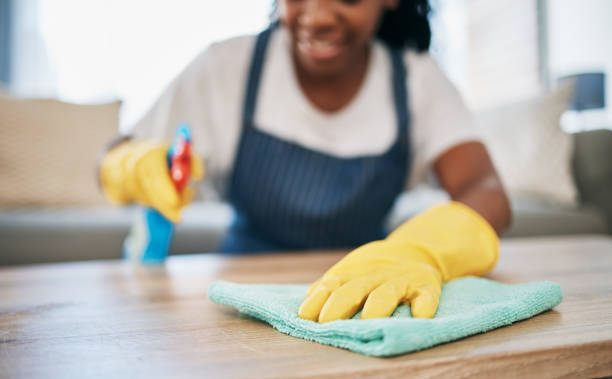by Evan Bollinger
As much as we’d like our homes to be the perfect ‘safe space,’ this is rarely the case. Unbeknownst to many homeowners (or any tenants for that matter) are the dangers looking right around the corners.
Not burglars. Bacteria. Viruses. Nasty little pathogens that can catch us off guard, creep by our immune systems, and cause an infection.
If you’ve found yourself getting ill without exposing yourself to people, it could be because you caught something at home. Surprised? Let’s break down four kinds of pathogens that like to get into your home, how you may contact them, and most importantly, what you can do about them!
1. Respiratory Illnesses
Whether it’s the flu, common cold, or something like pneumonia, respiratory illnesses love to lie in waiting indoors. They can easily transmit when someone sneezes, coughs, and in rare cases, simply talks nearby.
Is it a rhinovirus? Is it influenza? Is it something else?
Whatever it is, there are many ways you can pick it up. One of the most common ways is through our phones and devices, which we touch constantly and which carry droplets and other forms of germs. Your door knobs and handles are also often filled with little buggers – from cabinets to light switches and everything in between!
To thwart this threat, consider upping your cleaning routine. Wipe down your phone and devices with disinfectant wipes at least once per day. Make sure to hit your handles, knobs, and switches throughout your house once per week as well.
And don’t forget good hand hygiene. Wash with soap and water for a minimum of 20 seconds and rub thoroughly. The trick is to keep your body and home clean, but to do it with balance. After all, your body has good bacteria too that you don’t want to kill completely.
Nobody likes an upset stomach, especially when it comes from norovirus or E. coli, pathogens that leave you feeling really bad. If you’re experiencing symptoms like diarrhea, vomiting, or cramping of the stomach, it could be from contaminated surfaces in your home. In fact, residences with multiple residents may supercharge the spread of these bacteria and viruses.
To cut down on exposure, be mindful of your bedding – and again – your knobs and handles. Some pathogens can last on your sheets and pillows for days, so be sure to wash bedding weekly in hot water, drying on the highest heat to kill any pathogens. Pillow protectors are also a great idea.
As for surfaces, be sure to clean in kitchens and bathrooms, and make sure any area where food is prepared or eaten is cleaned up after!
3. Skin Infections
We all wanna look youthful, but skin infections can ruin that fast.
If you have a skin infection like a staph or fungal infection, it may stem from surfaces in your home. Many fungi love warm, moist environments, so consider the things you touch often, and if you were in such an environment. Do you have a leak in your basement? How about standing water in your bathroom or kitchen?
Again wash your hands, clean your surfaces, and consider wiping down all your devices and phones at least once per day.
4. Allergic Triggers
Last but not least are allergens, which can be everything from certain foods to more common buggers like dust mites, pet dander, and mold. Although not your typical ‘infections,’ allergies can share many of the same symptoms. You may notice everything from asthma to itchy skin, red/watery eyes, headaches, fatigue, and more.
To clamp down on allergens, close your windows on poor air quality days. Clean your bedding regularly, as dust mites love to burrow in there. Also, clean your remote controls, which easily gather pet dander and dust when used over and over by different people.
It’s also important to get hypoallergenic healthcare products like soaps and shampoos, as well as hypoallergenic mattresses and pillows. Aside from that, make sure you don’t neglect your cleaning duties! Disinfectant wiping, dusting, and vacuuming are all important tasks to cut down on allergen buildup.
If you have any leaks, take care of it! And if you suspect the air quality in your home may be poor, consider a “HEPA” air filter, which is perfect for catching things like spores, mites, dust, and dander before they get a chance to get you sick!
By following these routines consistently, improving your health at home is not difficult.
Simply be mindful. While some people hate cleaning, try to make it fun. Find a day you can chill, put on a movie, podcast or music in the background, and get it done.
It will feel far less like work and you’ll be happy you did it!











